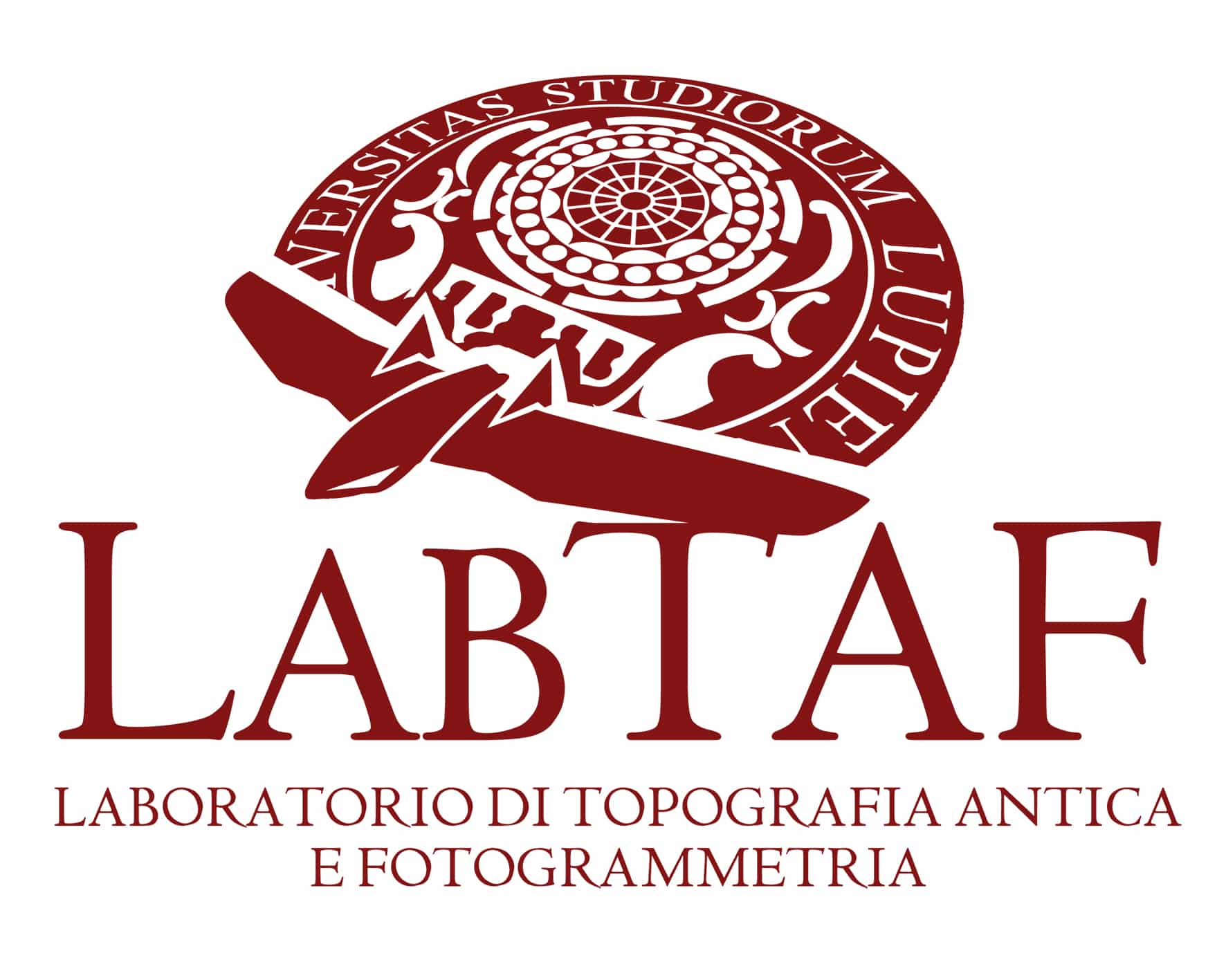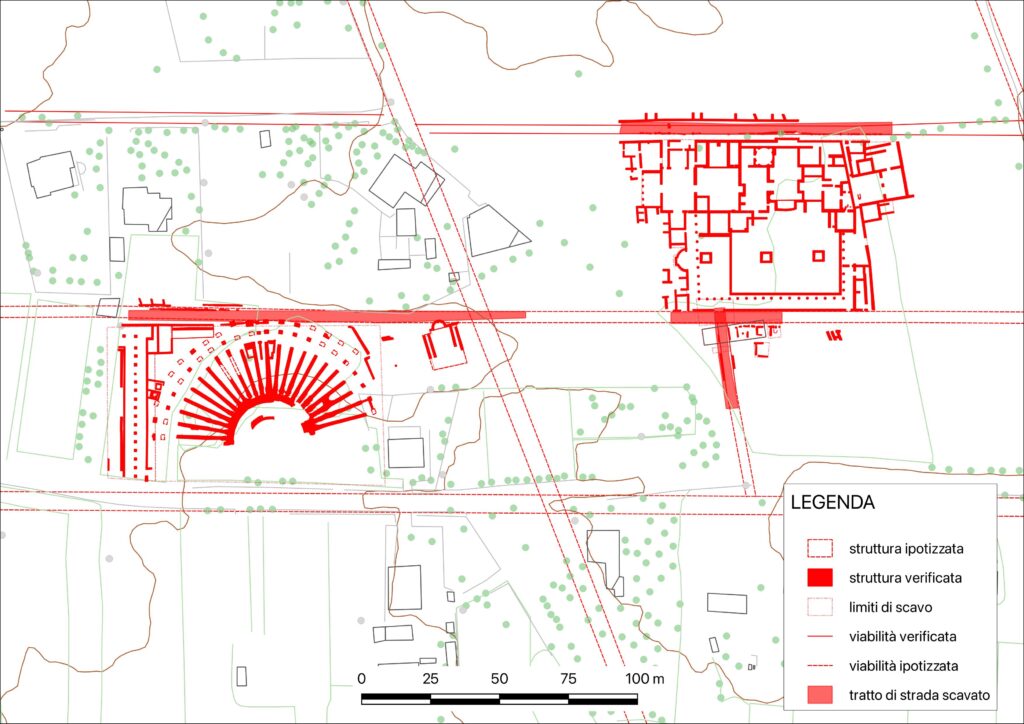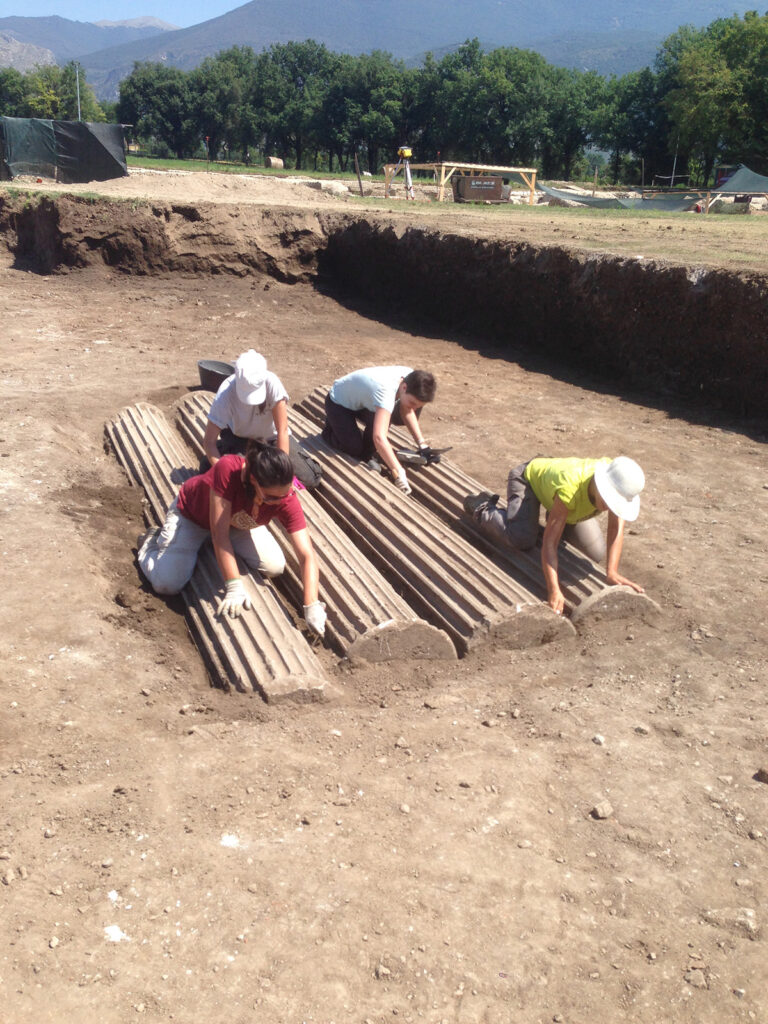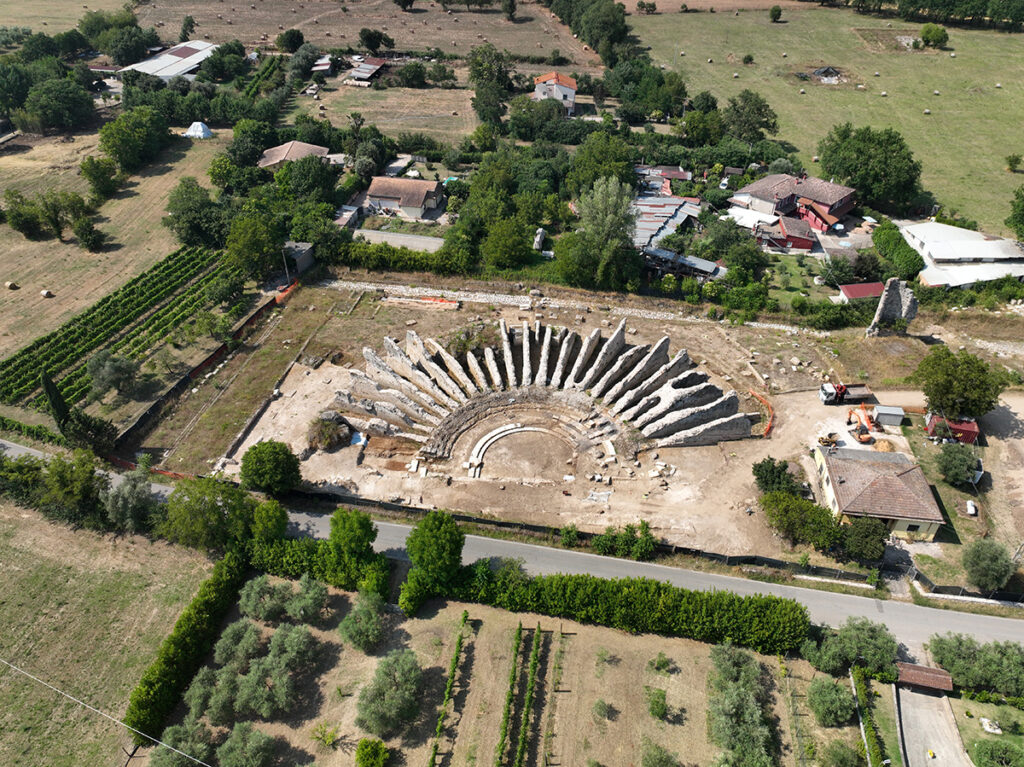Aquinum
SPELEOLOGY AND ARCHAEOLOGY FOR THE STUDY OF
THE HYDRAULIC SYSTEMS OF THE ROMAN THEATER
Aquinum, located in the territory of the municipality of Castrocielo in the province of Frosinone – 100 km from Rome – is an ancient Roman city of notable historical and archaeological importance. Situated in the valley of the Liri river, a fertile and strategically relevant area, it is crossed by the Via Latina that connected Rome to Capua.
Birthplace of the poet Juvenal and a significant center for the production of purple dye, Aquinum became a colony during the Second Triumvirate, reaching its peak in the first centuries of the empire before declining in the 4th and 5th centuries AD until the arrival of the Lombards.
Today, Aquinum is one of the last ancient buried cities. Since 2020, Roma Sotterranea has begun to support the University of Salento, which has been carrying out its excavation campaigns for 16 years. Thanks to a collaboration agreement signed with the university, Roma Sotterranea provides technical and scientific support for research, exploration, direct and instrumental surveying, and photographic and video documentation of evidence in underground environments.
50000
From 2020 to 2023 Roma Sotterranea has completed the study of water supply and drainage systems in the large area of the Central Baths, documenting more than 240 meters of conduits, with over 25 branches and about 30 wells and openings. Since 2024, the activity has moved to the Theater area, starting an exploration and study of the hydraulic system, a complex system largely still unknown.
The project we are presenting aims to reconstruct a part of the history and urban planning of the city through a multidisciplinary approach and the use of advanced technology to identify hydraulic conduits and wells, providing scholars with new research ideas and reconstructive hypotheses on the life of Aquinum. The project has been divided into several areas within the Theater and under the road that runs alongside the complex. The hypotheses to be verified include the existence of a large sewer collector at the intersection of the Cardo Maximus and Decumanus Maximus, and the search for traces of a monumental fountain. Another element of great interest is to verify the existence of an annular drain outside the theater and the presence of additional conduits and inspection wells.
The conduits of the Theater that we have studied to date, as well as those in the latrine area, have yielded important data on life in Aquinum from the late Republican to the Imperial eras, telling the story of the rise and decline of the Roman colony and its territory—a transformation that is still waiting to be fully explored, narrated, and shared.









